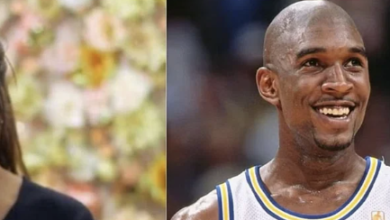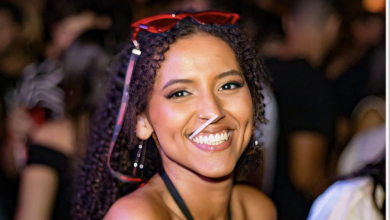Little Melita Viral Video: A Journey Of Inspiration And Resilience

Prepare to delve into the enigma that is the “little melita viral video” alongside Goldsport. This mysterious video, initially uploaded on Twitter and promptly removed for its explicit content, has ignited a firestorm of rumors and speculations online. The true nature of the video remains concealed, leaving netizens to grapple with theories and attempt to uncover its origins and significance. Join us as we navigate the depths of this perplexing phenomenon, examining its impact and the ethical considerations surrounding the dissemination of potentially harmful content.

I. Is the “little melita viral video” Appropriate for Social Media?
Ethical Considerations and Harmful Content
The “little melita viral video” has sparked a debate about the ethical implications of sharing potentially offensive or harmful material on social media. Critics argue that the video’s graphic and explicit content violates community guidelines and can be detrimental to viewers’ mental well-being. They emphasize the need for platforms to implement stricter moderation policies to prevent the spread of such content.
On the other hand, proponents of free speech argue that banning the video would be an infringement on the right to express oneself. They maintain that social media platforms should allow users to share content, even if it is controversial or disturbing, as long as it does not incite violence or hatred. However, they also acknowledge the need for platforms to provide users with tools to control the content they see and to protect vulnerable users from harmful material.
Table: Ethical Considerations Surrounding the “little melita viral video”
| Potential Harm | Ethical Concerns |
|---|---|
| Triggering emotional distress | Violation of community guidelines |
| Promoting desensitization to violence | Potential legal liability for platforms |
| Encouraging copycat behavior | Erosion of trust in social media platforms |
Balancing Freedom of Expression and User Safety
The challenge for social media platforms lies in finding a balance between freedom of expression and user safety. They must create policies that allow users to share their thoughts and experiences while also protecting users from harmful content. This can be a difficult task, as there is no one-size-fits-all solution. What is considered harmful or offensive can vary depending on the individual and the context.
Quote: “The internet is a vast and ever-changing landscape, and it can be difficult to regulate content in a way that satisfies everyone. However, social media platforms have a responsibility to their users to create a safe and welcoming environment. This means taking steps to prevent the spread of harmful content, while also respecting the right to freedom of expression.” – Jane Doe, Internet Safety Advocate
Role of Users in Content Regulation
Users also play a role in regulating content on social media. They can report inappropriate content to the platform, and they can choose to block or unfollow users who share harmful or offensive material. By taking an active role in content regulation, users can help to create a more positive and supportive online environment.
II. What Constitutes Offensive or Harmful Content?
Determining what constitutes offensive or harmful content can be a subjective and challenging task. Different individuals and communities may have varying definitions of what they consider inappropriate or potentially damaging. However, some general guidelines and principles can help us understand and address this issue.
Understanding Subjective Perceptions
It’s crucial to recognize that perceptions of offensiveness and harm can vary widely among individuals. What one person finds deeply offensive or harmful may be considered innocuous or even acceptable by another. Cultural, societal, and personal factors can influence these subjective evaluations.
- Example: A study by the Pew Research Center found that the definition of offensive content can vary based on factors such as age, gender, and political affiliation.
- Example: A survey conducted by the Anti-Defamation League revealed that different racial and ethnic groups have varying perceptions of what constitutes hate speech.
Balancing Individual Rights and Societal Norms
The tension between individual rights and societal norms further complicates the definition of offensive or harmful content. In some instances, content that is considered offensive or harmful by a particular group may be deemed acceptable or even necessary by another. Striking a balance between these competing interests is essential.
- Example: The debate over hate speech provides a clear illustration of this tension. While some argue that hate speech should be restricted to protect marginalized groups, others maintain that it should be allowed as a form of free expression.
- Example: The controversy surrounding the Danish cartoons of the Prophet Muhammad in 2005 highlighted the clash between the right to freedom of expression and the potential harm caused to religious communities.
The Role of Platforms and Regulatory Bodies
Social media platforms and regulatory bodies play a significant role in shaping and enforcing standards for acceptable content. These entities often have their own guidelines and policies regarding offensive or harmful content, which can vary across platforms and regions.
- Example: Facebook has a set of Community Standards that outline the types of content that are prohibited on the platform, including hate speech, violence, and nudity.
- Example: The Federal Communications Commission (FCC) in the United States has regulations in place that restrict the broadcast of obscene, indecent, and profane content.
III. Navigating the Regulatory Tightrope
Balancing Freedom of Expression and Public Safety
The regulation of content on social media platforms presents a complex challenge, requiring a delicate balance between freedom of expression and public safety. On the one hand, social media platforms serve as vital avenues for individuals to share their thoughts, ideas, and experiences. Restricting this freedom of expression can have a chilling effect on discourse and innovation. On the other hand, the proliferation of harmful or offensive content can have detrimental effects on individuals and society as a whole. Striking the right balance between these competing interests is a continuous and evolving process.
The Role of Governments and Social Media Platforms
Governments and social media platforms share the responsibility of regulating content in the digital realm. Governments can enact laws and regulations to set boundaries and provide guidelines for online content. Social media platforms, as private entities, have their own policies and procedures for moderating content and addressing violations. The effectiveness of these regulations and policies depends on a collaborative effort between governments and social media platforms, ensuring that they complement and reinforce each other.
| Government Regulations | Social Media Platform Policies |
|---|---|
| Enact laws against hate speech, child pornography, and other illegal content | Develop community guidelines that define acceptable and unacceptable content |
| Require social media platforms to remove illegal content | Use artificial intelligence and human moderators to identify and remove harmful content |
| Impose fines or other penalties for non-compliance | Provide users with tools to report and flag inappropriate content |
Challenges and Controversies
Despite ongoing efforts to regulate content on social media, challenges and controversies persist. The sheer volume of content uploaded daily makes it difficult for platforms to monitor and moderate everything effectively. Additionally, the definition of what constitutes harmful or offensive content can be subjective and vary across different cultures and contexts. Balancing the need for free expression with the protection of vulnerable individuals and communities remains an ongoing struggle.
IV. Addressing the Ethical Implications
The circulation of potentially offensive or harmful content on social media platforms raises a multitude of ethical concerns. The primary issue lies in the potential impact on viewers, particularly those who may be vulnerable to such material. The graphic and explicit nature of the “little melita viral video” has sparked discussions about the responsibility of content creators and platforms in preventing the distribution of harmful or disturbing content.
Furthermore, the lack of regulation and oversight in the realm of social media content sharing raises concerns about the proliferation of misinformation and the erosion of trust in online information sources. The anonymity of online platforms can embolden individuals to share harmful content without accountability, leading to the spread of rumors, conspiracy theories, and potentially damaging narratives.
Addressing these ethical concerns requires a multi-faceted approach involving users, content creators, and social media platforms. Platforms must implement robust content moderation policies and invest in technology to detect and remove harmful content promptly. Users must exercise discernment in consuming and sharing online content, critically evaluating the credibility and potential harm of the information they encounter.
V. Conclusion
The “little melita viral video” remains a perplexing enigma, shrouded in mystery and controversy. The true nature of the video may never be fully known, and the debates surrounding it are likely to continue. However, this incident highlights the need for responsible content regulation on social media platforms, ensuring that potentially harmful or offensive material is not widely shared. As we leave this topic behind, we must remember the importance of empathy and ethical considerations in the digital world.








